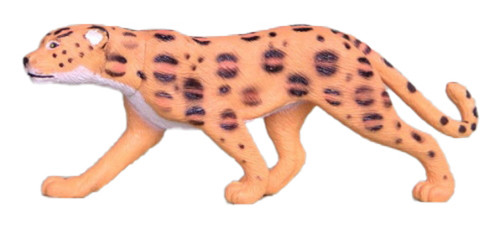Product Description
Our Jaguar Plastic Toy or Replica Our realistic-looking jaguar is made of hollow plastic and measures 7 1/4 inches from nose to tail. The body is moulded with a fur-like pattern and details that almost make it seem real. Its name is moulded into the underside. This sturdy, light-weight plastic big cat is great for school projects, toys, novelties, animal collections, party favors and more. Our plastic jaguar is for decoration or play only. You can make an awesome Amazon rainforest shoebox diorama using this and other plastic creatures from our gift shop. Come see our wonderful assortment of jaguar toys and gifts as well as the rest of our cat collection.
Jaguars (Panthera onca) once ranged all the way from northern Argentina to the American Southwest. By the 20th Century, most of these big cats had been hunted to extinction in the United States. The last female jaguar was shot in Arizona in 1963. However, there are promising signs that jaguars are returning to the Southwest. Camera traps in Amado, Arizona, have captured recent photographic images of two, possibly three, jaguars. After tigers and lions, jaguars are the biggest cats on Earth. They are also the only native North American cats that roar, and unlike many of their water-fickle feline relatives, jaguars love to swim. Equipped with very powerful jaws, jaguars have a unique killing method: they pierce the skulls of their prey with their teeth, thereby taking out the brain. They will also use the more typical Panthera method of "deep throat bite and suffocation" to kill. What's on the jaguar's menu? Everything from caimans to anacondas; these cats are fierce. Not many creatures are brave enough to take on either of those reptiles. Jaguars also eat peccaries, tapirs, deer, capybaras, and any small species they can catch. With their impressive hunting prowess and gorgeous markings, it's easy to understand why jaguars figured prominently in the mythology of the ancient Maya. Among many examples, there was God L, the jaguar god of the underworld; Ixchel, the jaguar goddess of midwifery and medicine; and the Jaguar God of Terrestrial Fire, associated with both war and the underworld. The Olmec people of Mexico had were-jaguar legends of half-jaguar, half-human beings. Sadly, our jaguars are far from supernatural, and their populations are suffering. Human encroachment upon their homes and hunting grounds, deforestation, poaching, and hurricanes all threaten these beautiful cats. Initiatives to create "jaguar corridors," which allow the cats to move safely though human populations, are one important effort being made to protect this species. Jaguar article by Amy Ryding





